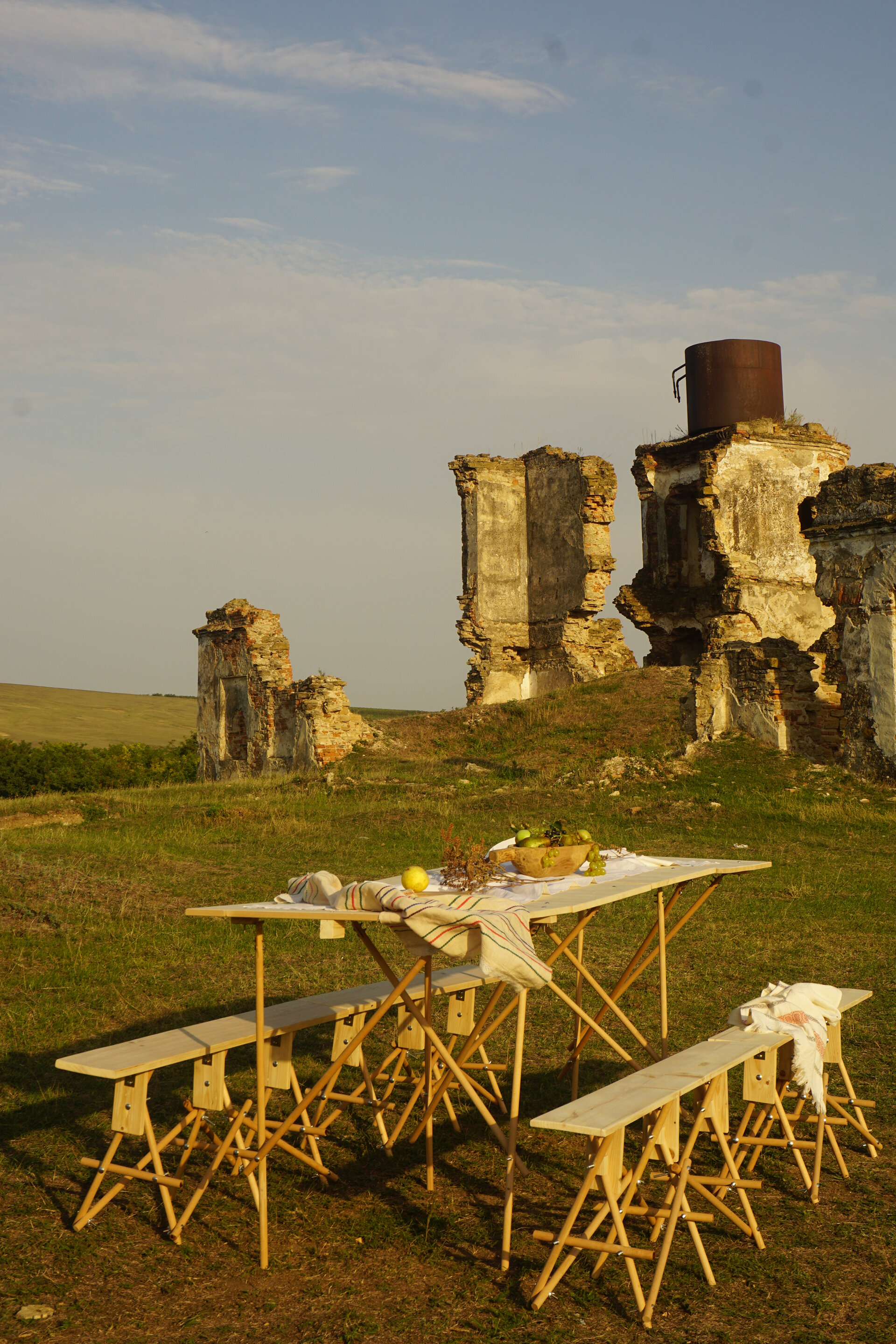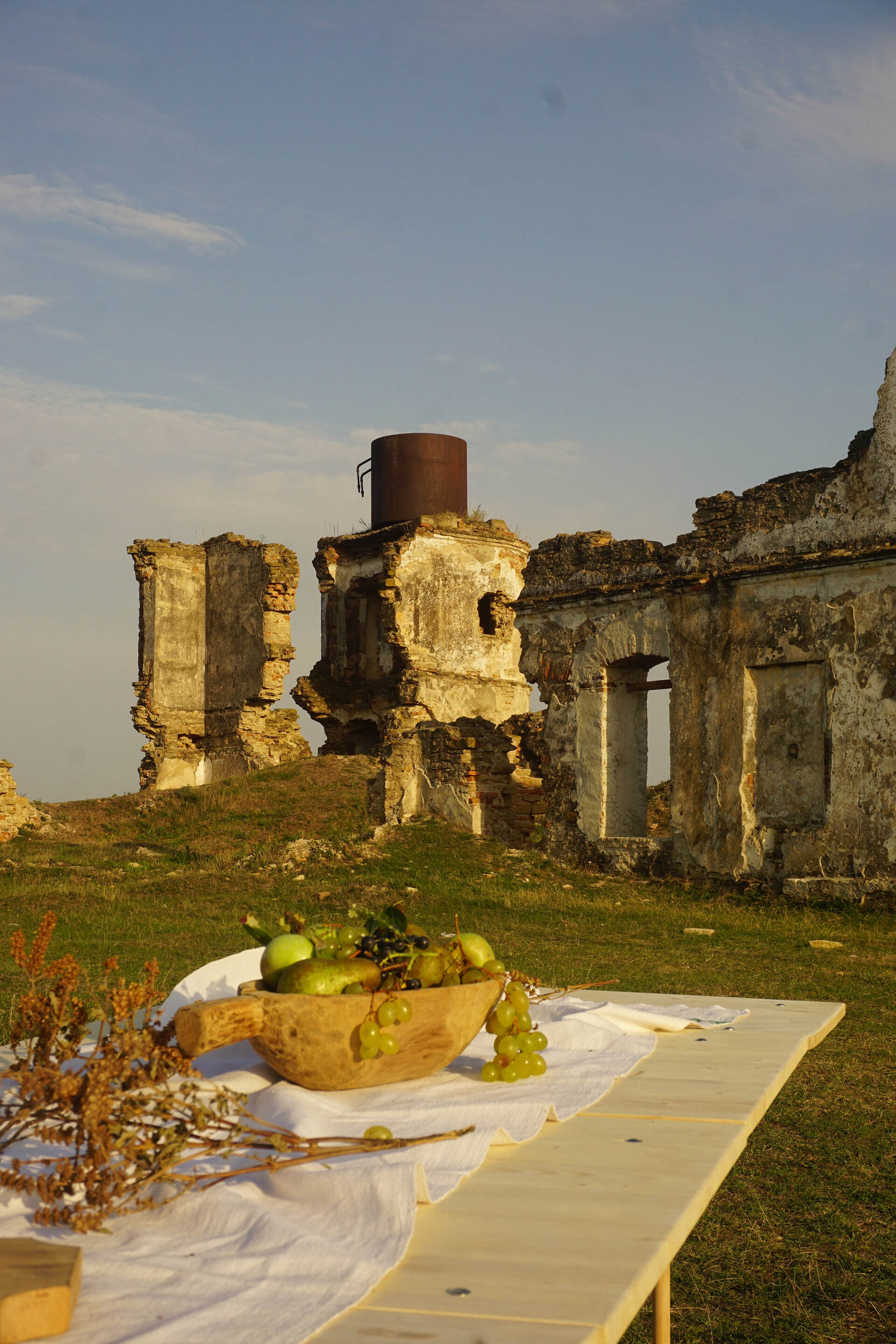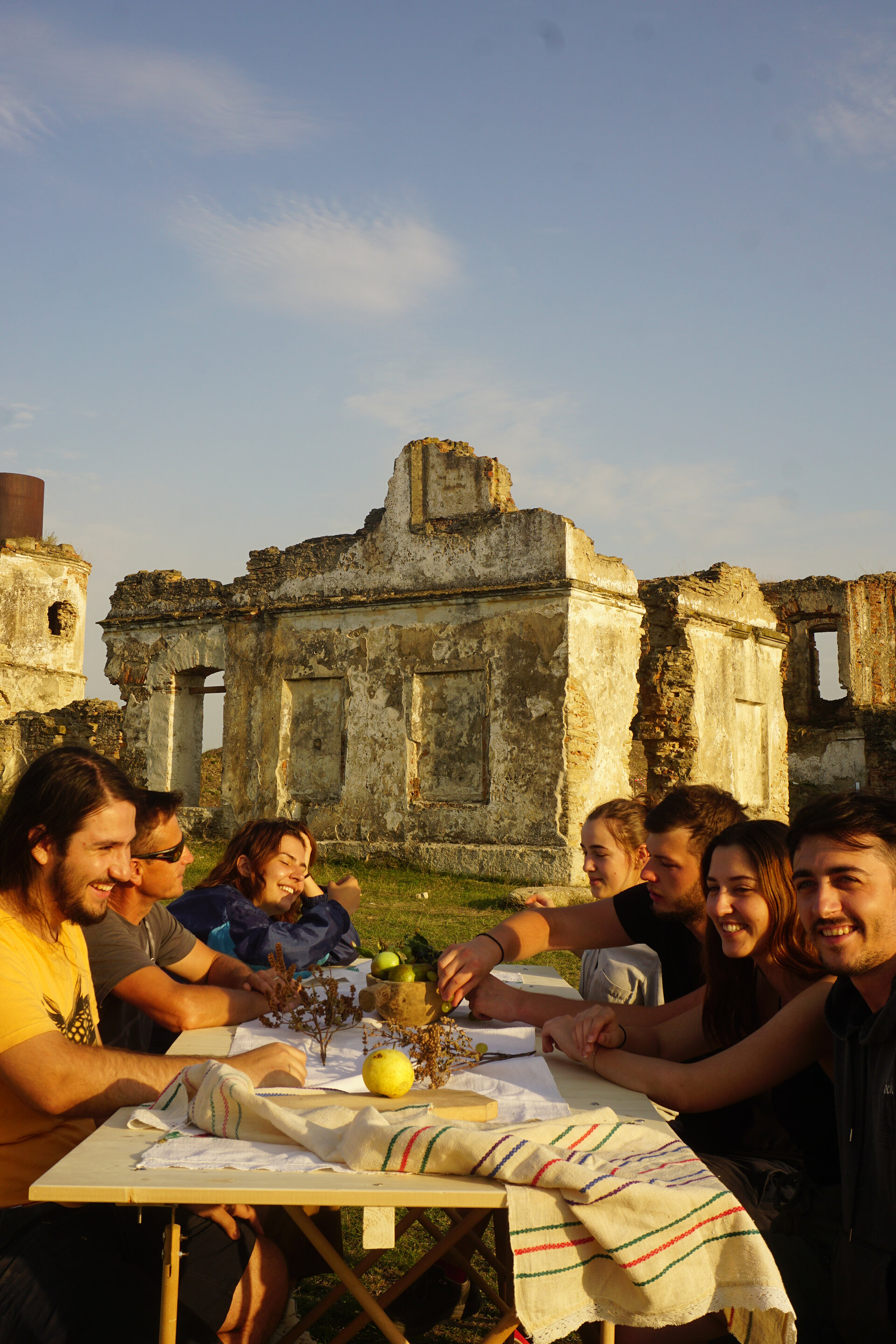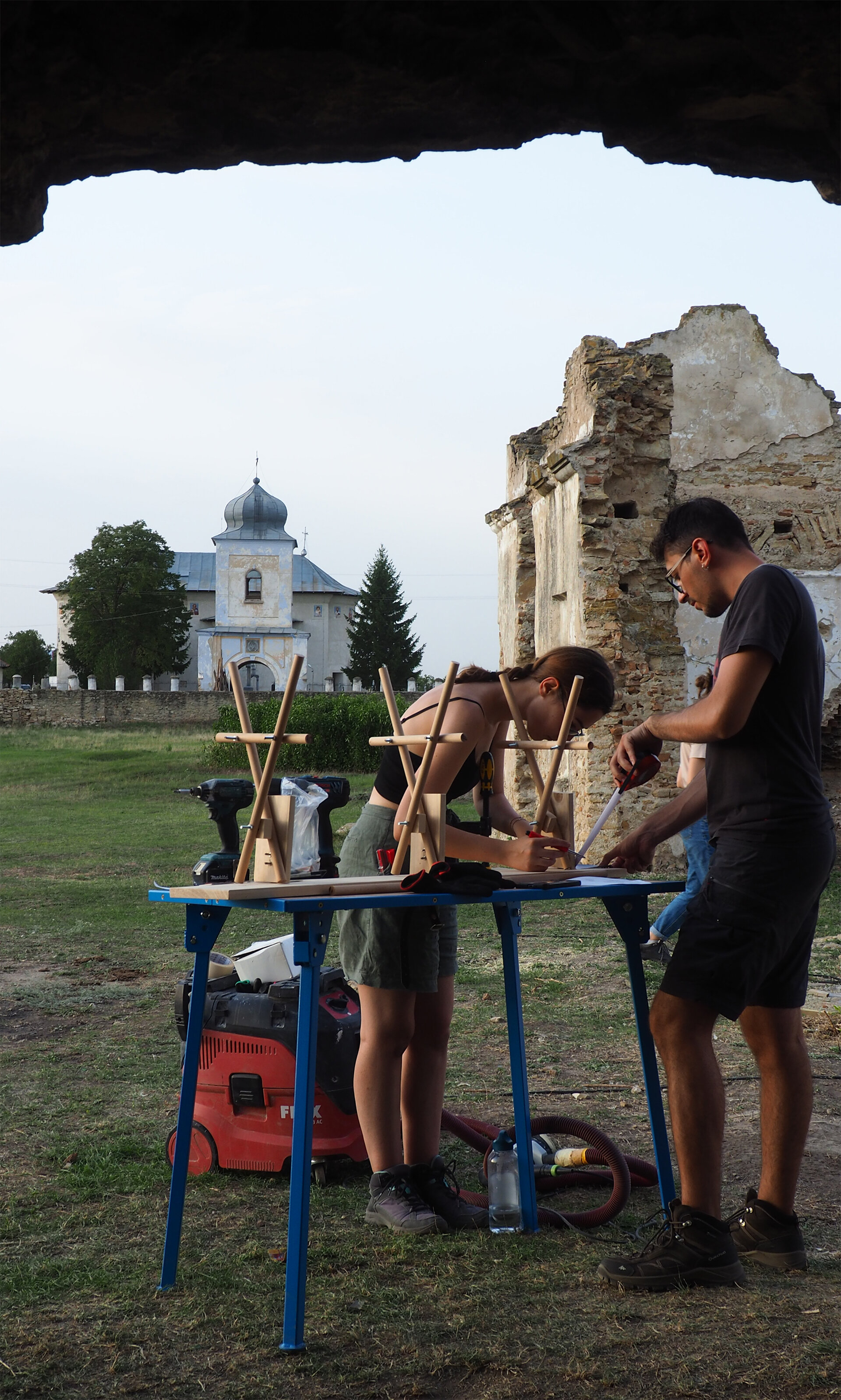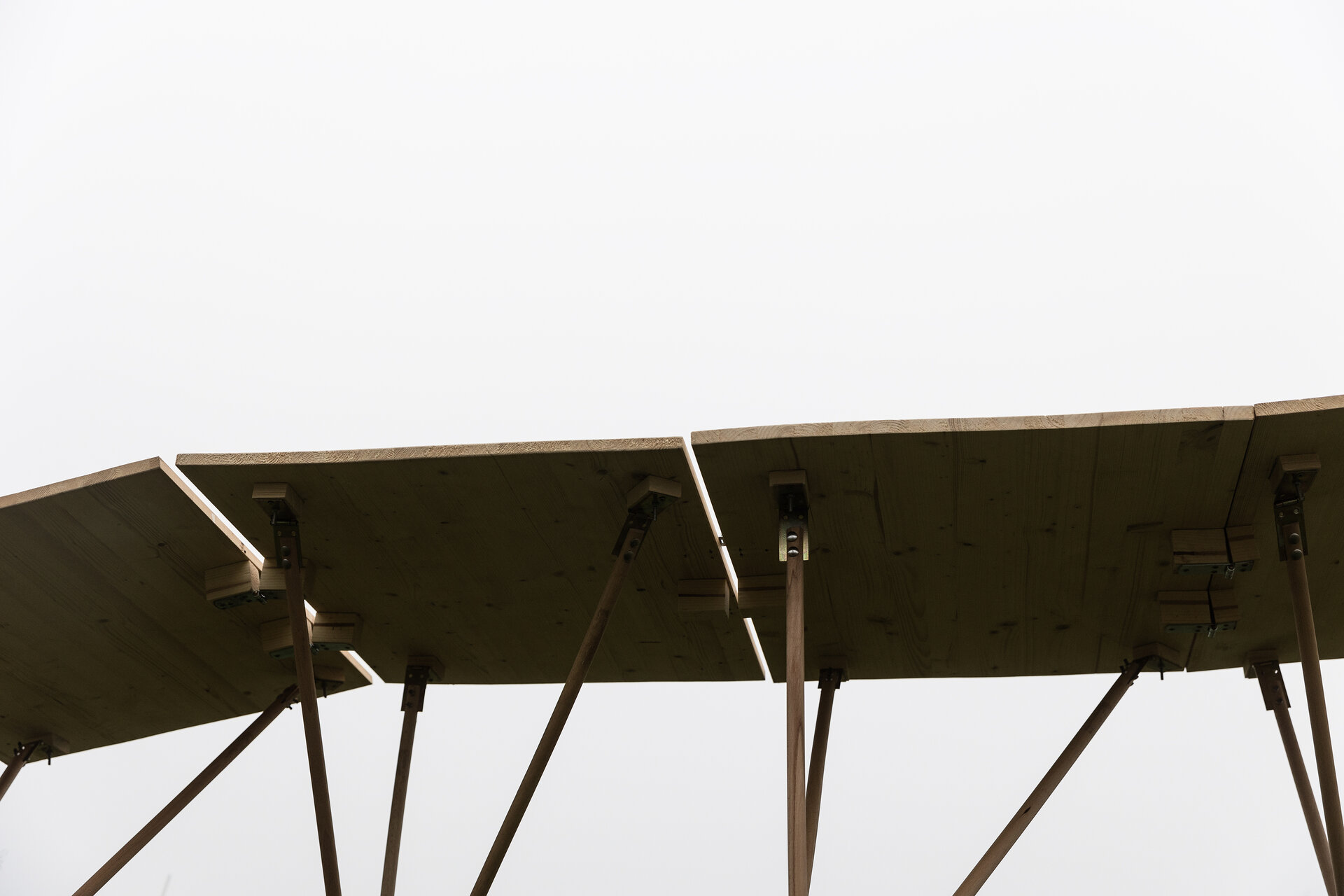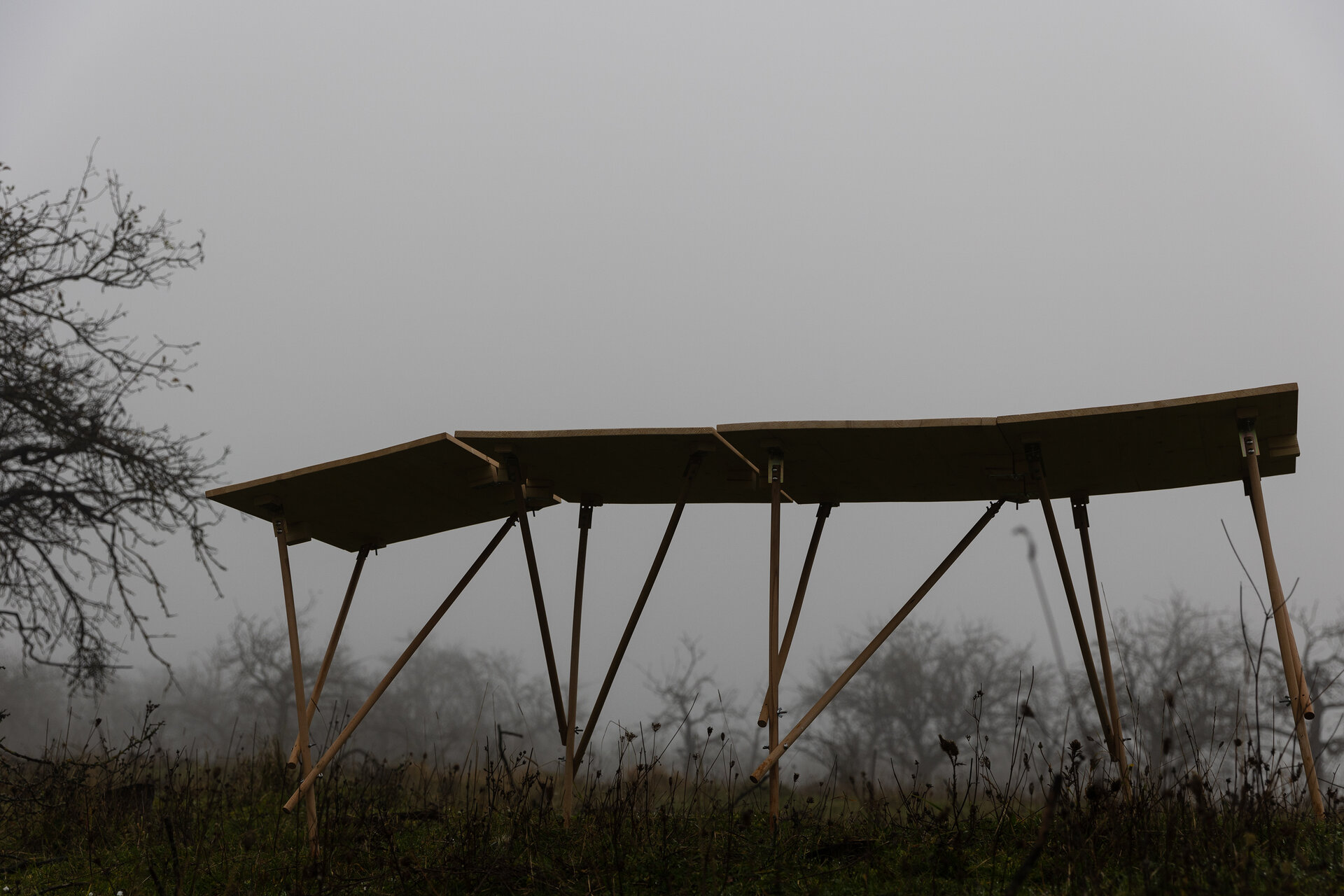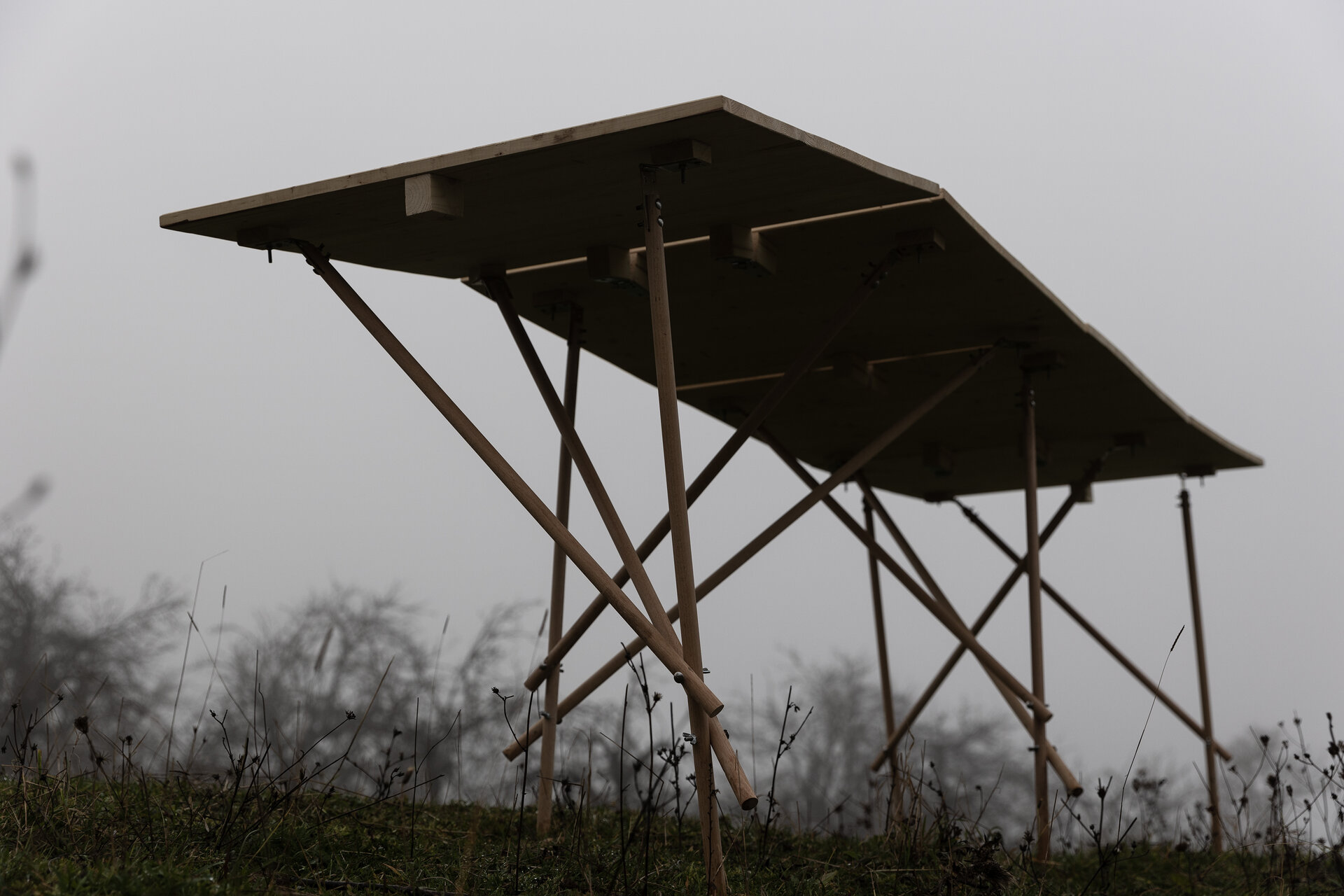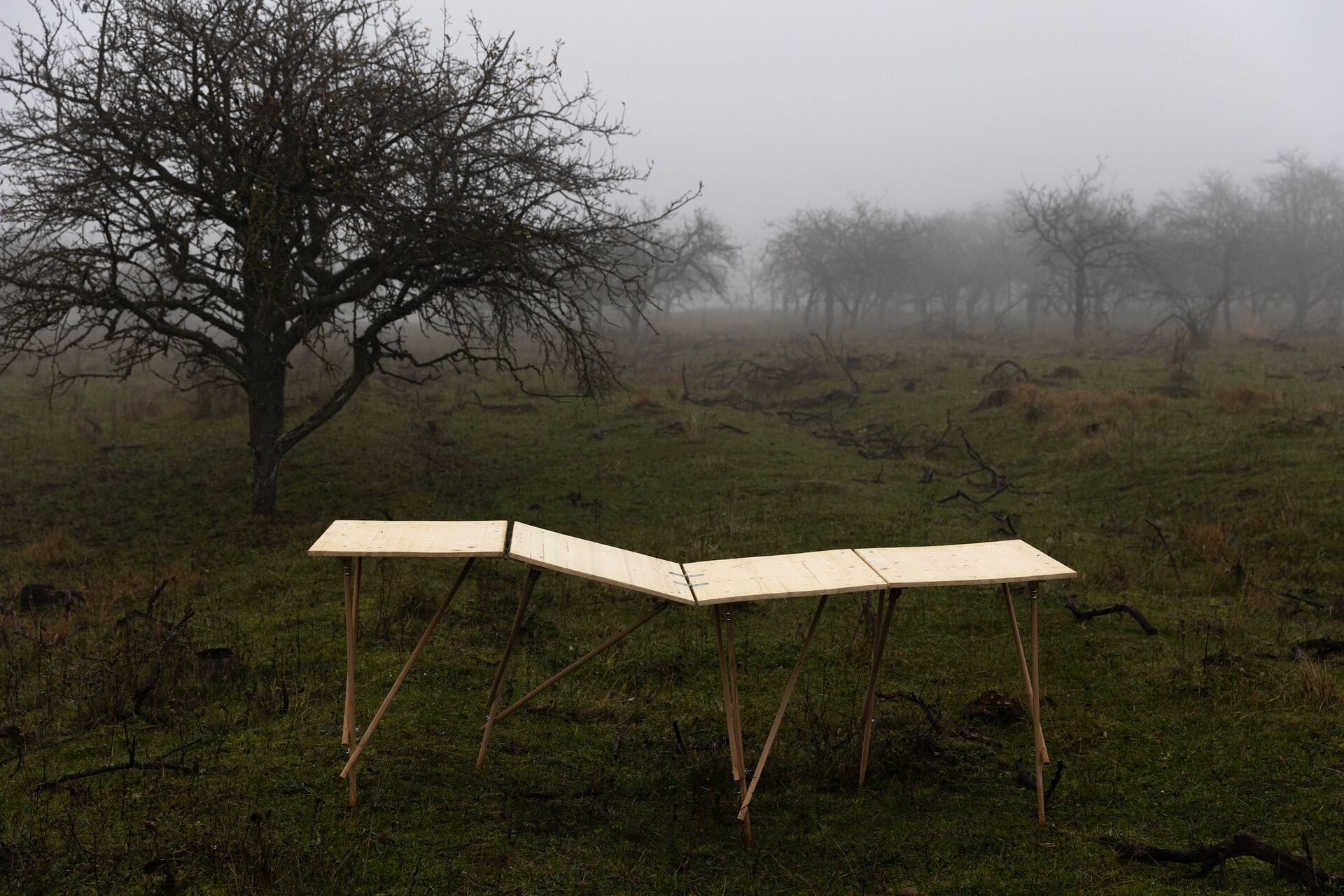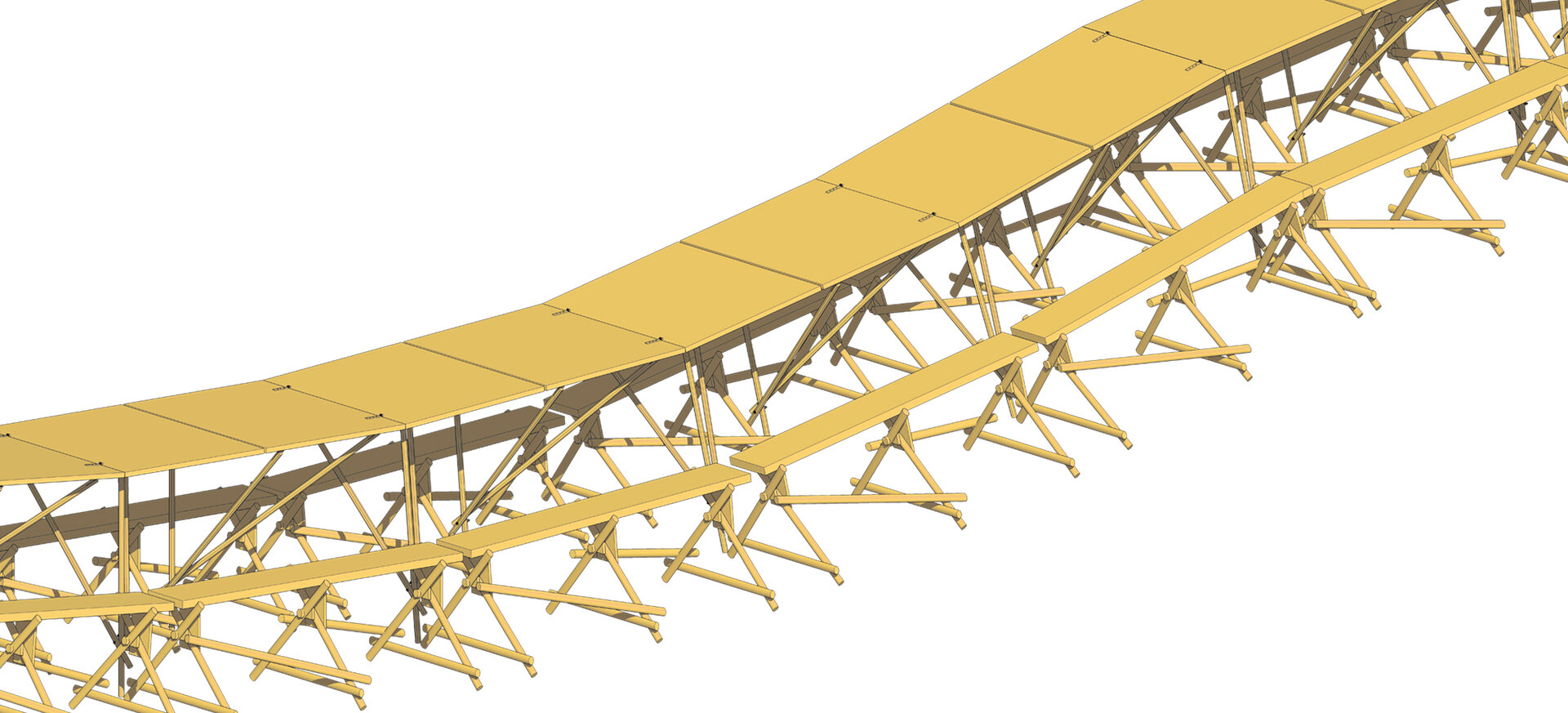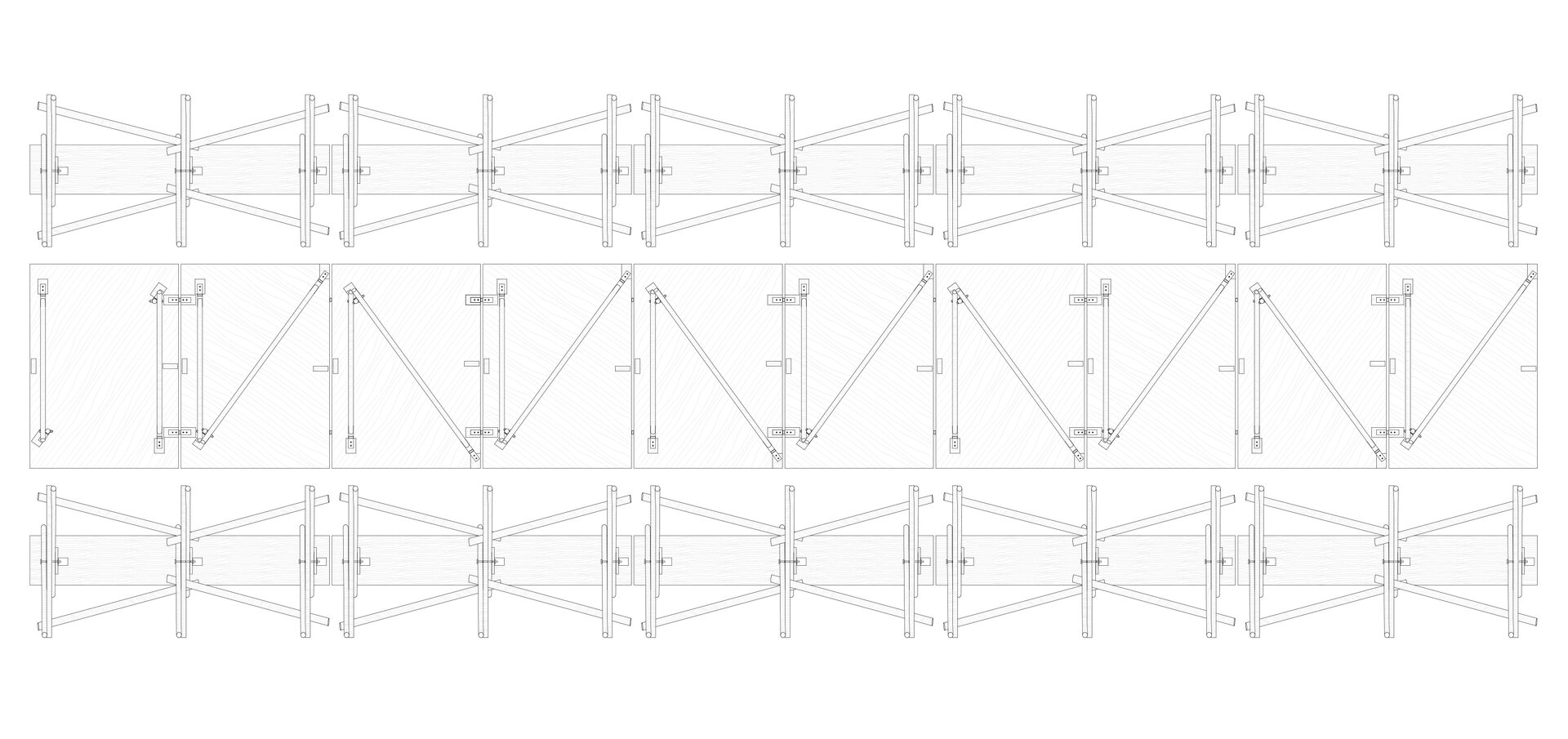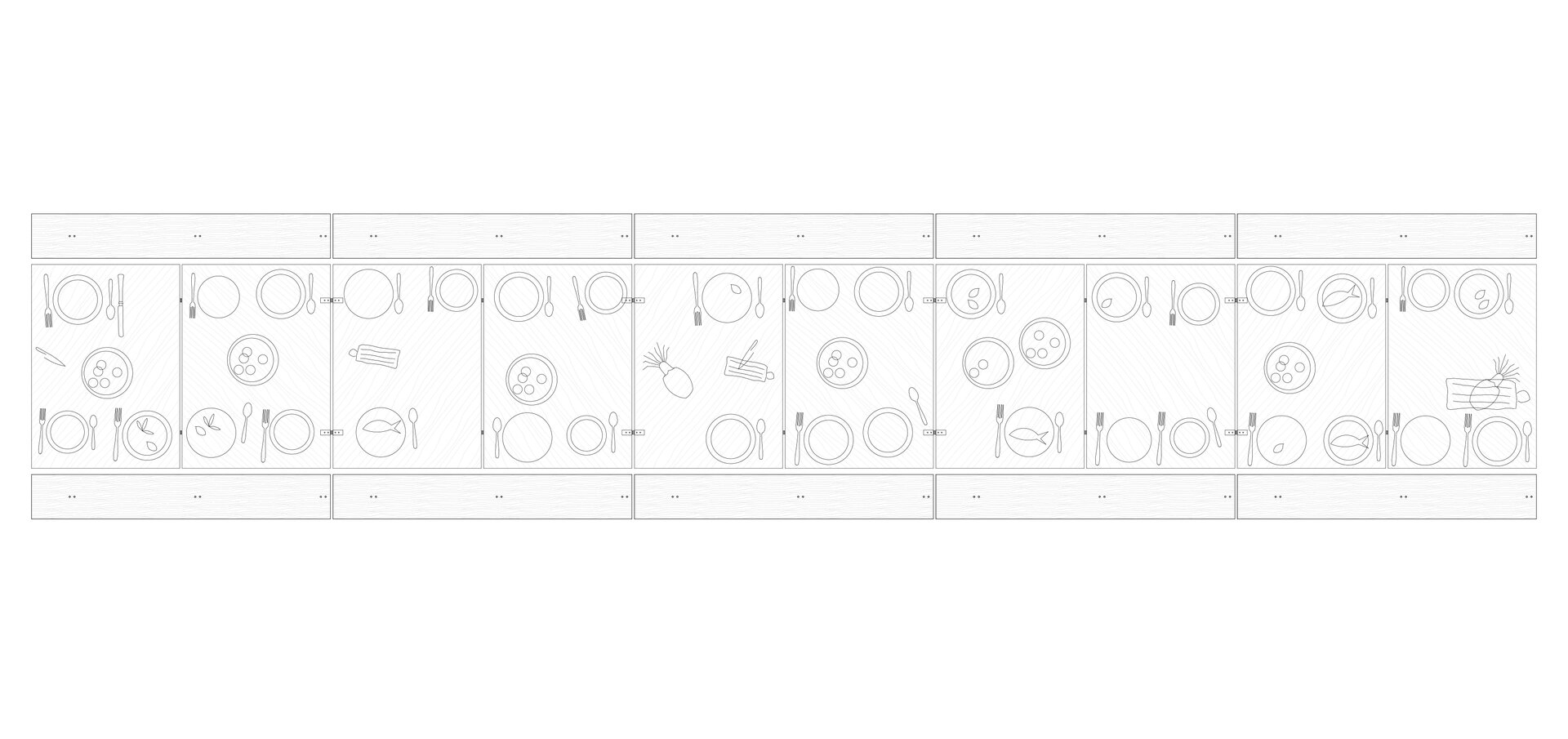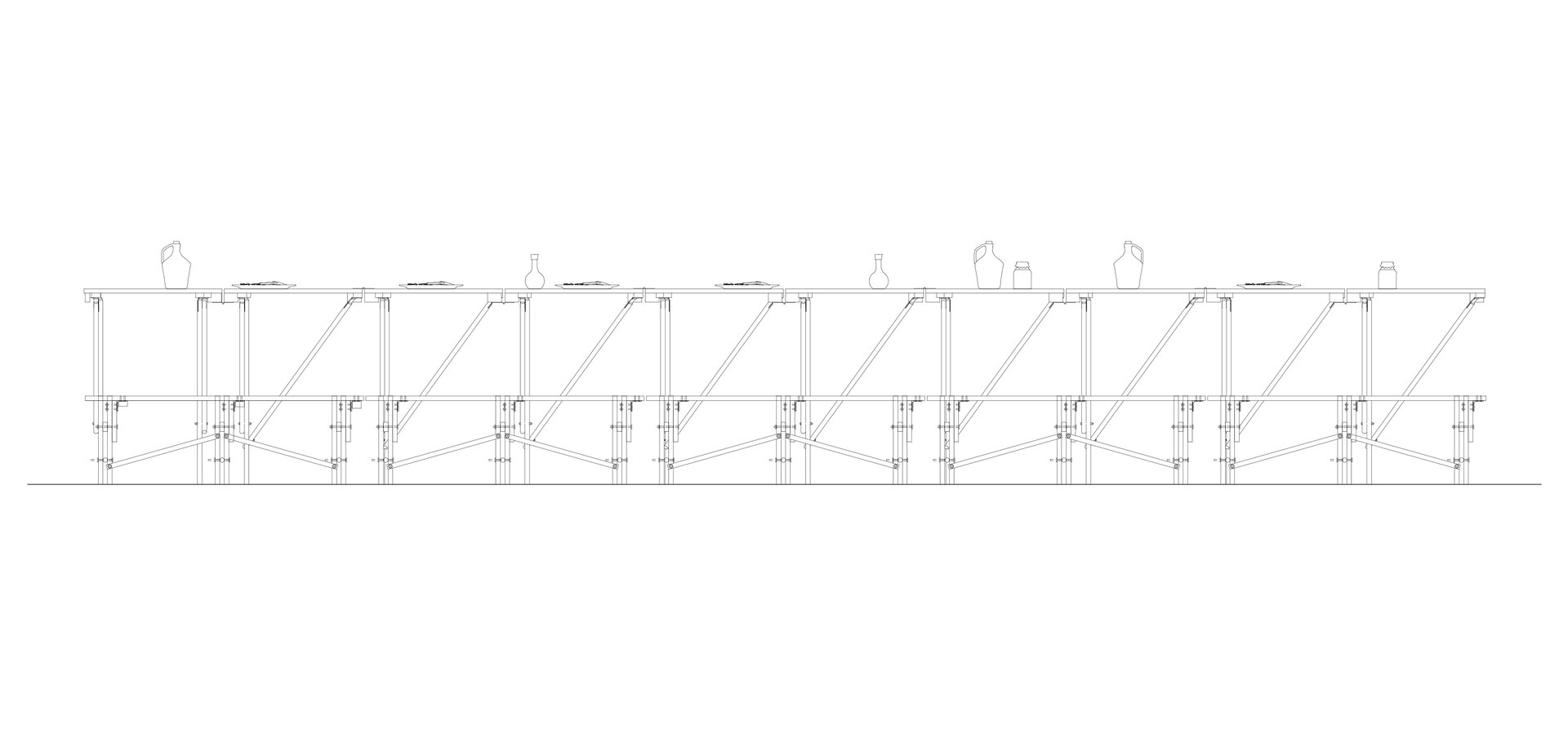
Millipede
Authors’ Comment
The “Millipede” is a table manufactured by architecture students participating in the 2022 edition of the Summer School organised by the National Heritage Institute at the Cantacuzino-Pașcanu mansion in Ceplenița, with the support of the Town Hall of Ceplenița and the ACOLO Association.
Everyone will always gather around the table: with its modular constructive system (a mirrored repetitive construction model), the object wills itself to become a meeting point and a bonding place for the community.
Built during the carpentry workshop of the summer school, the table is a finished object. However, the concept has a projective outlook to reinforce community ties, therefore it always revises and extends the initial form by modular additions. The initial object will age with the stories gathered around it, and the story of the original memory-carrying material will be continued by the newcomers surrounding it.
Inspired by the sinuous hills surrounding the village of Ceplenița, we conceived an object which moulds around any terrain and always carries itself differently. Each modular unit is composed of three dowel rods (a leg screwed together with two diagonals) and a wooden surface plank linked to adjacent modules by hinges. The extension of the object occurs when each module is mirrored and hinged together, a constructive system which also allows folding and placement versatility. The end modules are an exception, as they are standalone and use two vertical rods and two diagonals each.
Of particular concern to us was the way the objects can be adapted and transported. By virtue of the hinges and connective systems, the modules can be stacked on top of each other and folded in a fan-like manner.
Because we wanted the Millipede to be more than a piece of furniture, but instead a place where people gather to eat, talk and create, the object is surrounded by a set of benches - places to sit. These follow a similar concept, the dowel rod legs folding onto the seating plank for transport.
Ultimately, our place-making experiment proposes research through architecture and construction in two key ways: first, the object creates a place for the local community to gather and connect, supporting the social mission of architecture. Secondly, the process of crafting the object by students of architecture explores the tangible dimension of the profession: completing a real product from a drawing.
- OPEN Garage
- The „Bătător plus”
- Living Danube Limes
- Govora Heritage Lab
- Year One. First Year. Model / Vocabulary /Tools
- IMUAU Summer School. Schönberg 2022
- Tradition and tehnology. The digital documentation of the Ensemble of the Fortified Church of Dealu Frumos
- Pherekyde's Courtyard
- Water to wine
- Millipede
- Eliminating the median area between traffic lanes
- Football as Infrastructure of Democracy
- In-Visible Venice - An architectural comparative journey thru Italo Calvino's projections
- ELEMENTS - Sibiu Summer School 2022
